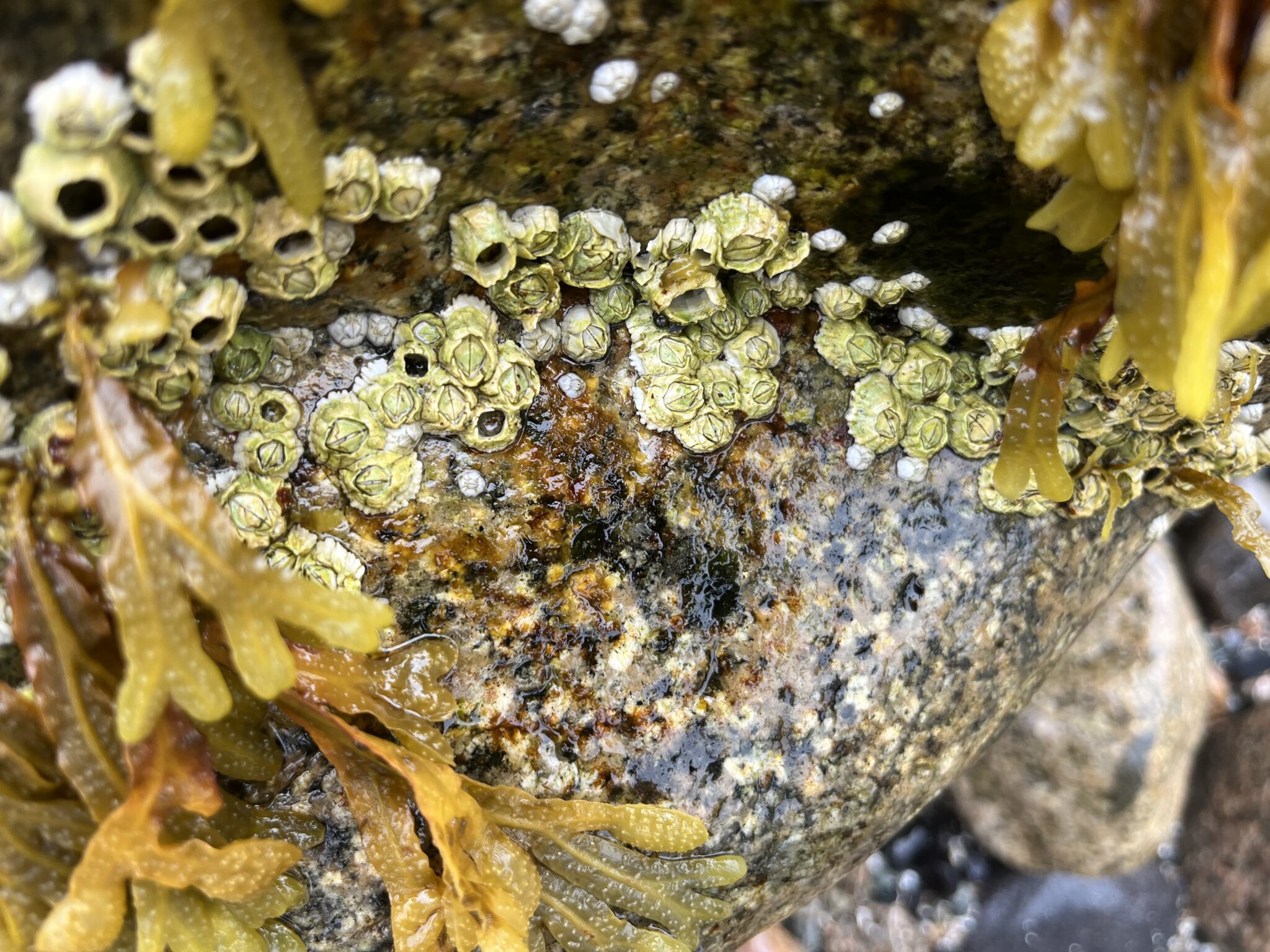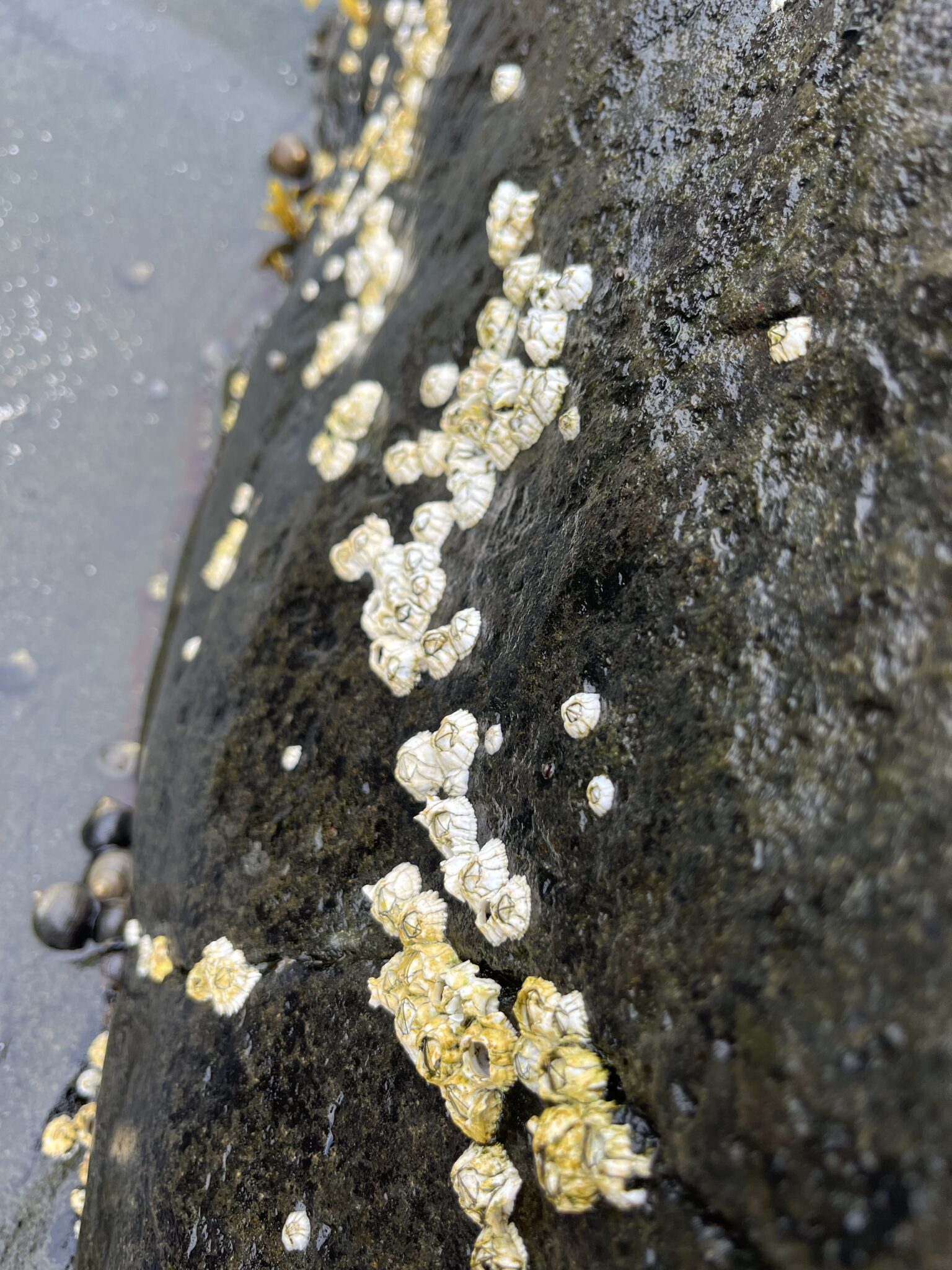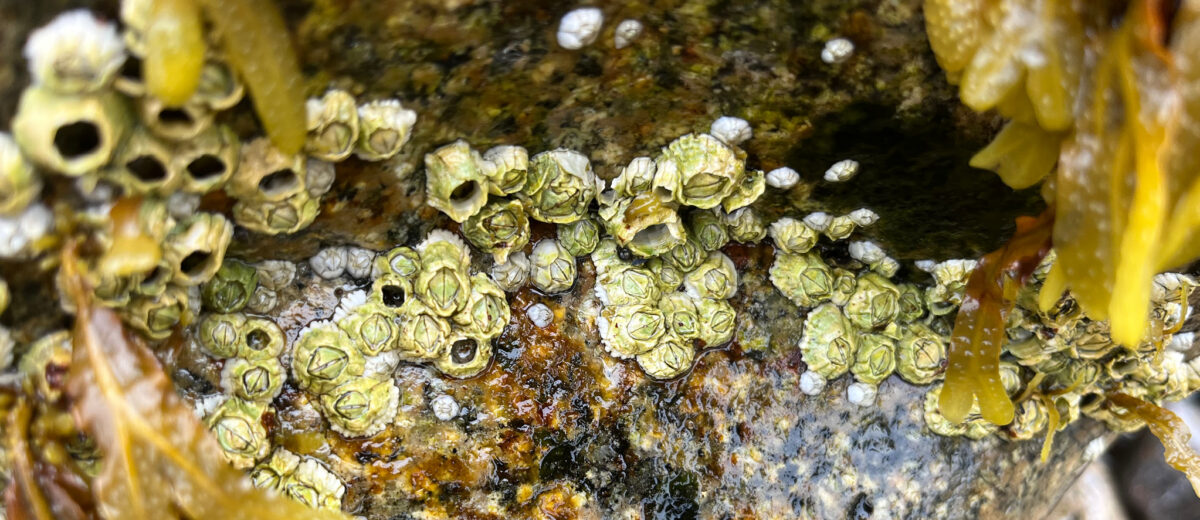story + photos by Abigail Bar, Schoodic Institute Ecology Technician
Throughout the field season I have been studying rockweed (a seaweed species), and I found myself taking interest in all the intertidal organisms I came across. A recent conversation with some friends about my work led us to discussing barnacles. The organisms I had previously only attributed to making walks in the ocean a little more painful, now led me to realize the importance of descriptive definitions in science.
“Do barnacles have brains?” one of my friends asked.
I was stumped. This was not a question I had ever had to consider. A quick online search couldn’t seem to give us a concrete answer leading me to the question: what actually is a brain to begin with?
Webster’s first definition of “brain” is “the portion of the vertebrate central nervous system enclosed in the skull and continuous with the spinal cord through the foramen magnum that is composed of neurons and supporting and nutritive structures (such as glia) and that integrates sensory information from inside and outside the body in controlling autonomic function (such as heartbeat and respiration), in coordinating and directing correlated motor responses, and in the process of learning.” The second definition is short: “a nervous center in invertebrates comparable in position and function to the vertebrate brain.” While invertebrates too can have some sort of a central nervous system, I realized there isn’t an easily understood definition of what makes it a brain, other than comparison to vertebrates, and in particular humans.

The conversation with my friends led us to the discussion of how perhaps we are more willing to accept that organisms have brains if they are more visually similar to humans. For example, crabs have two eyes and appendages, so we are much more likely to believe they have brains. But barnacles are less visually similar to us, so the organism having a brain seemed harder to comprehend, despite both species being invertebrates.
In our daily language, we refer to animal limbs as “arms,” or “legs” in the case of the crab, solely based on if we subconsciously believe they are similar enough to our own arms and legs. Here again, arms are defined in human terms as “a human upper limb, especially the part between the shoulder and the wrist,” or a similar structure in other animals. How do we distinguish between limbs of other organisms?
Another example of an uncertain definition is whether an organism is considered sentient. Sentient is defined as “capable of sensing or feeling: conscious of or responsive to the [human] sensations of seeing, hearing, feeling, tasting, or smelling.” A plant turning to face the sun could be considered a physical response to stimulation. Does this make a plant sentient? If not, at what point do organisms become sentient? Does it involve feeling emotion rather than just responding to a stimulus? This then brings to question what emotion is and who or what is capable of experiencing it?
The gray areas in our definitions also represent just how complex the living world is. The fact that even a seemingly simple question of whether barnacles have brains can spark a debate, reiterates the intricacy of living beings. I hope that as an ecologist, I will continue to be critical of the way we define and describe other organisms and scientific concepts. Having definitions that encompass a wide range of organisms while still being able to adequately perform as identifiers for structure and function remains a challenging task. It seems that the way we define anatomy, behavior, and other qualities of organisms is through the lens of how they compare to humans. This perspective can close doors to our understanding of other living things.
Learning to detach ourselves from this human-centric perspective can allow us to study the living world in a more holistic way, and potentially expand our ability to empathize with all living things. In other words, while barnacles may be visually and anatomically different from humans, we share that we are both living things, and both have complex backstories of how and why we evolved. The complexities of other living organisms are not limited to the structures, functions, and behaviors as we understand them in humans. I believe that this more comprehensive mindset is crucial when it comes to developing conservation and sustainability practices that assist not only humans but the living world as a whole.

